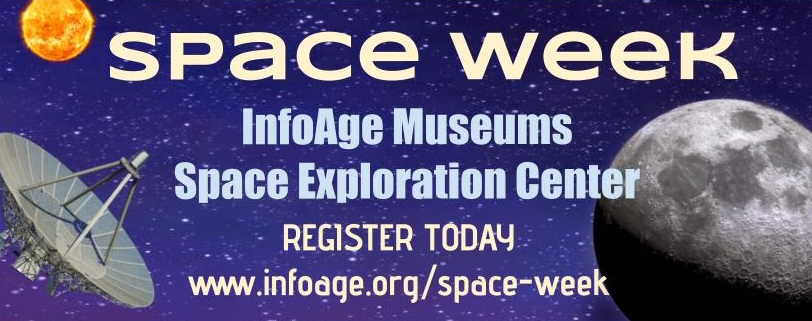The History of InfoAge Science & History Museums
Oral Histories - Oral History of FELIX LAVICAInterviewee: FELIX LAVICA
Interviewer: Michael Ruane
Date: 1998?
Place: Camp Evans – 9039
Media: NTSC Video
Summary: Mr. Irv Bauman
TAPE 10
FELIX LAVICA, PHYSICIST, ELECTRICAL ENG’R
He received his B.S. In Engineering Physics at NYU. He worked at Evans from 1951-1984, 33 yrs, praising Evans for having facilities for constructing anything needed by the Project Engineer. These facilities included Machine, Carpenter, Sheet Metal, Foundry Shops. He started working for Nucleonics Branch, designing and building radiation detection equipment. Then he joined EW Lab with Max Adler, its Director, then to Avionics Lab at Evans, and next to Ft. Eustis, working on Data Transmission and various radar propagation experiments.
After all this, he joined “REMBASS” (Remotely Monitored Battlefield Surveillance System), an outgrowth of McNamara’s “Maginot Line”. This system involved the development of special sensors placed along the Ho Chi Min Trail in S.E.Asia. After 33 yrs at all of the above, Felix retired and continued working for REMBASS as a Contractor. He took a Physics Course under Dr. Walter McAfee and later became an Associate Astrophysicist under him, working propagating radio frequencies thru atomic clouds. In this connection, he traveled to the South Pacific where an Atomic Bomb was detonated. Felix designed comb filters and separate PRF’s for /from different rockets. Dr. McAfee became a Staff Scientist.
Felix then cited an anecdote that occurred in the South Pacific with Basil Markow, a Physicist and Chief of Radiation Sources. While on Kusai Island, the natives built a canoe to enable Felix and Basil to travel between islands, one which they paid for with their own money. Unfortunately, the canoe was built to the smaller frame of the average native and was too small for them to use. They shipped the canoe back to Eniwetok, and then to the labs, packaged with radioactive packing material which couldn’t get past Evan’s Security, and so it was disassembled into pieces, which were then reassembled, and is believed yet to be on display at Ft. Monmouth.
REMBASS was an outgrowth of and based on SEOPS, used in Vietnam. It contained magnetic and seismic sensors that were reduced in size. They sensed the presence of people and weapons. Seismic sensors would detect the presence of a person, wheeled or tracked vehicles. The data would be picked up by a Receiving Station via a Data Link. Felix has available photos of such sensors.
Felix was a project engineer working with contractors like RCA in Camden & Burlington. He would prepare specifications, check the contractor’s progress by periodic visits, and eventually testing the resulting equipment to ascertain specification compliance.
He then referred to RF Emitters “Noiseless Button Bombers” in use in S.E. Asia. Natives, walking along the Ho Chi Min Trail could face injury from the explosion and so other sensors were designed to differentiate natives from the enemy. Felix then spoke of the Diana Radar, a parabolic dish with Dr. McAfee the Project Engineer, on the program to contact the moon. It appears that actual moon contact was done with a Bedspring type dish with a phased array of helical coils to create a bedspring type of antenna, whereas the Diana Parabolic Dish used a dipole feed at the parabola focus. The Bedspring, which was positioned further down the hill and is no longer available, actually made moon contact in 1946.
Felix indicated that 2 people lost jobs as a result of McCarthy’s “Witch Hunt”. One, a Lou Kaplan, who was found to be a reader and a contributor to a Communist Newspaper. He ended up leaving his job to work in his family’s candy store.
EW Lab in Evans was known as Countermeasures Division. There System Analysis was done to arrive at parameters of a system such as Air Defense, subject to signal jamming. Suggested changes to decrease jamming were arrived at. Later the Division became the EW Lab. Felix’s largest project was REMBASS where he served as a Project Engineer on component development, preparing specifications, testing, and recommending changes. When retired, he worked for Analytics Inc. in support of Evan’s program.
Felix enjoyed working at Evans, no traffic, large parking lot never more than half full, and a well-stocked shop facility, just a great place to be working. There was a Bowling League composed of many, one of whom, Ben Bookbinder, is still bowling today. The Cafeteria, run by a fellow named Sam, provided well-cooked food in 1951. He was an excitable type but did a great job. After he left, others took over, providing machines to dispense cold food items. Evans provided a country-like atmosphere and was therefore known as the “Country Club of Fort Monmouth”.
Felix again referred to Dr. McAfee as a gentleman who was technically extremely competent. Felix was glad to learn that Ft. Monmouth is naming a building after him. He thought he would enjoy meeting his widow, to express his thoughts about the Doctor.
35 min.
Page created August 10, 2002
We Need Your Help! Volunteer with Us.
Join our mission to preserve historic Camp Evans and teach the public about science and history.
Sign up to join our team of volunteers and start on your own mission today.
InfoAge Science & History Museums
2201 Marconi Road
Wall, NJ 07719
Tel: 732-280-3000
info@infoage.org
webmaster@infoage.org

